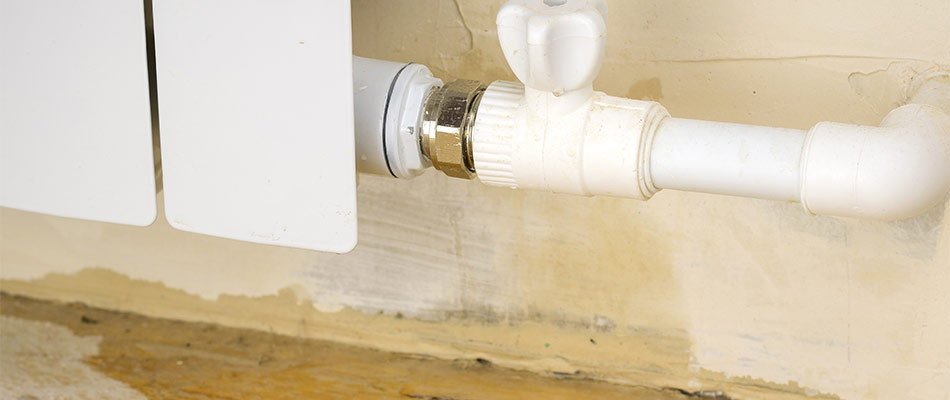Six Tested Techniques for Spotting Hidden Water Line Leaks
Six Tested Techniques for Spotting Hidden Water Line Leaks
Blog Article
They are making a number of good points regarding Top leak detection hacks in general in this post underneath.

Early detection of leaking water lines can alleviate a possible calamity. Apart from saving you money, it will lessen the stress and irritation. The moment you find a leakage, calling your plumber for repair work is the best solution. Nevertheless, some little water leaks might not be visible. If you can not identify it with your naked eyes, below are some hacks that help.
1. Take A Look At the Water Meter
Inspecting it is a guaranteed way that aids you find leakages. If it relocates, that indicates a fast-moving leakage. This indicates you might have a sluggish leakage that could even be below ground.
2. Examine Water Intake
If you spot sudden modifications, regardless of your usage being the same, it indicates that you have leaks in your plumbing system. An abrupt spike in your bill shows a fast-moving leak.
A steady rise every month, even with the very same routines, reveals you have a slow leak that's additionally slowly rising. Call a plumber to extensively examine your building, especially if you feel a warm area on your floor with piping underneath.
3. Do a Food Coloring Test
30% comes from commodes when it comes to water usage. Test to see if they are running correctly. Drop flecks of food shade in the storage tank and wait 10 mins. If the shade in some way infiltrates your bowl throughout that time without flushing, there's a leakage between the tank and also bowl.
4. Asses Outside Lines
Do not fail to remember to check your exterior water lines as well. Should water permeate out of the connection, you have a loosened rubber gasket. One tiny leak can lose loads of water as well as increase your water costs.
5. Examine the scenario as well as inspect
Homeowners should make it a habit to examine under the sink counters and also inside cupboards for any type of bad odor or mold and mildew development. These two red flags show a leak so prompt attention is required. Doing routine examinations, also bi-annually, can conserve you from a major problem.
A lot more significantly, if you understand your house is already old, keep a watchful eye on your heaters, hose pipes, pipelines and so on. Look for stainings and damaging as many pipelines and also appliances have a life span. They will likewise normally weaken because of tear as well as wear. If you suspect dripping water lines in your plumbing system, do not wait on it to rise. Call a professional plumber as soon as possible so you don't wind up with a dreadful mess in your home.
Early discovery of leaking water lines can alleviate a possible disaster. Some little water leaks may not be visible. Checking it is a guaranteed way that helps you uncover leaks. One tiny leakage can throw away bunches of water and also surge your water bill.
If you believe dripping water lines in your plumbing system, don't wait for it to escalate.
WARNING SIGNS OF WATER LEAKAGE BEHIND THE WALL
PERSISTENT MUSTY ODORS
As water slowly drips from a leaky pipe inside the wall, flooring and sheetrock stay damp and develop an odor similar to wet cardboard. It generates a musty smell that can help you find hidden leaks.
MOLD IN UNUSUAL AREAS
Mold usually grows in wet areas like kitchens, baths and laundry rooms. If you spot the stuff on walls or baseboards in other rooms of the house, it’s a good indicator of undetected water leaks.
STAINS THAT GROW
When mold thrives around a leaky pipe, it sometimes takes hold on the inside surface of the affected wall. A growing stain on otherwise clean sheetrock is often your sign of a hidden plumbing problem.
PEELING OR BUBBLING WALLPAPER / PAINT
This clue is easy to miss in rooms that don’t get much use. When you see wallpaper separating along seams or paint bubbling or flaking off the wall, blame sheetrock that stays wet because of an undetected leak.
BUCKLED CEILINGS AND STAINED FLOORS
If ceilings or floors in bathrooms, kitchens or laundry areas develop structural problems, don’t rule out constant damp inside the walls. Wet sheetrock can affect adjacent framing, flooring and ceilings.
https://www.servicemasterbyzaba.com/blog/how-to-detect-water-leakage-in-walls/

I was introduced to that report on Leaking water lines through someone on a different web blog. Sharing is nice. Helping people is fun. Thanks for your time spent reading it.
Expert care? Call. Report this page